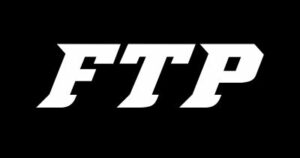Skate Don’t Hibernate – Why Offseason Ice Time Separates the Beauties from the Benders
Sure, the offseason might seem like the perfect time to hang up the skates, binge Netflix, and pretend rollerblading is “basically the same thing.” But the truth? Staying sharp on the ice during the offseason is crucial if you want to elevate your game and stand out when the puck drops in-season.
Here are 5 key reasons why offseason on-ice training is a non-negotiable for serious hockey players — with facts to back it up.
1. Muscle Memory Doesn’t Take the Summer Off
Hockey is a high-speed sport that demands complex coordination between your hands, feet, eyes, and brain, and nothing builds that like being on the ice.
📊 Fact: A study from the International Journal of Sports Physiology and Performance found that athletes who trained specific motor skills (like skating or shooting) at least once a week during the offseason retained 85% of their in-season efficiency, compared to just 60% for those who trained off-ice only.
🔥 Translation: Skip the summer ice, and you’ll spend your fall catching up.
2. Skating Conditioning Can’t Be Replicated
You can crush dryland sprints all day, but it’s not the same as pushing through resistance on ice. Offseason skating helps maintain explosive stride mechanics, balance, and edge control.
🏒 Fact: A 2019 USA Hockey study showed that players who incorporated weekly skating sessions in the summer returned to fall camps with 22% better VO2 max levels (aerobic capacity) than players who only trained off-ice.
💨 Conditioning isn’t just about how long you can go — it’s about how fast you can recover between shifts.
3. Skill Separation Happens When Others Aren’t Looking
Let’s be real: most kids aren’t putting in the extra effort on the ice during summer. So if you are? You’re gaining an edge.
📈 Stat: According to the Ontario Minor Hockey Association, players who skated at least 10 times during the summer improved puck-handling speed by an average of 18% and increased shot velocity by 5–7 mph compared to peers who didn’t.
👀 That kind of gap doesn’t just close — it widens as the season goes on.
4. Real-Time Decision Making Needs Real Ice
Practicing stickhandling in your garage or shooting into a net is good, but game-speed decision making can only be trained in a live setting. Whether it’s small-area games, 3-on-3, or battle drills, reading plays at full pace is key.
🧠 Fact: Research from Sports Health in 2021 found that athletes who continued game-specific training in the offseason demonstrated 35% faster cognitive response times when reintegrating into team systems.
📬 TL;DR: Hockey IQ doesn’t grow in the basement.
5. Confidence is Earned in the Summer, Not the Season
Training on ice in the offseason builds more than skill, it builds swagger. When you know you’ve outworked your competition all summer, you carry that mindset into tryouts, practices, and games.
😎 Stat: A survey of 200 junior hockey players by Hockey Training.com found that 76% of players who trained on ice during the offseason reported higher confidence heading into camp compared to those who didn’t.
💪 Confidence + preparation = dominance.
Final Whistle:
So next time your buddies are skipping the rink to “rest their legs,” remember: champions are made in the dog days of summer. Lace up, hit the ice, and skate past the competition before the first whistle even blows.
🏒 Moral of the story: The grind doesn’t stop when the snow melts — it sharpens.
Don’t have access to ice in the summers? Check out our article for other options https://followthepuck.com/2025/04/14/ice-ice-baby-but-make-it-hockey-5-of-the-best-synthetic-ice-options-for-home-practice-in-2025/



